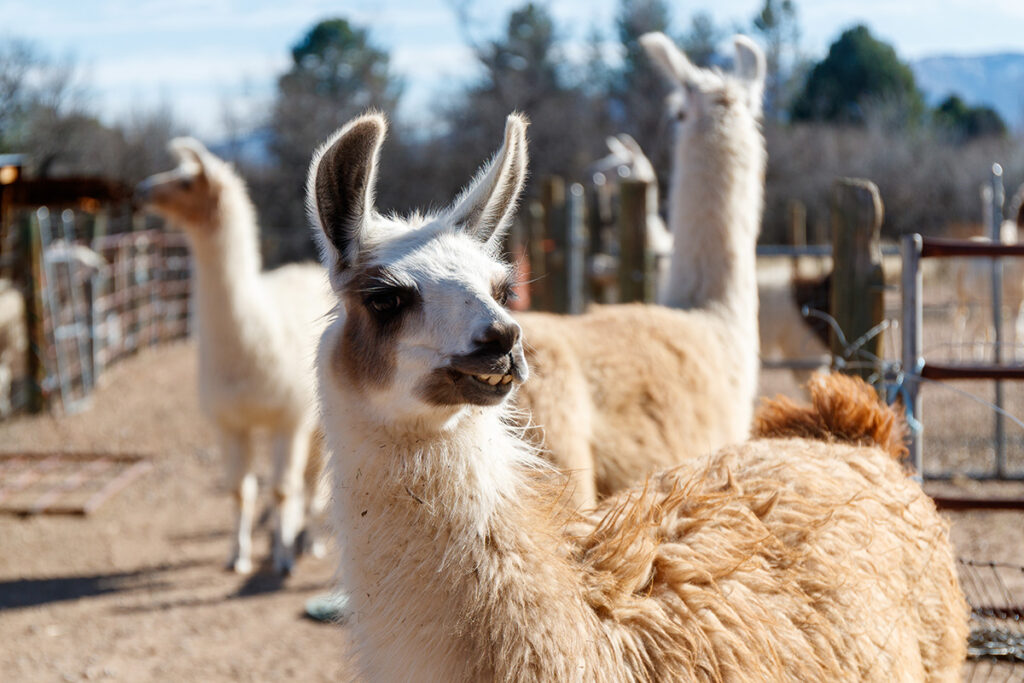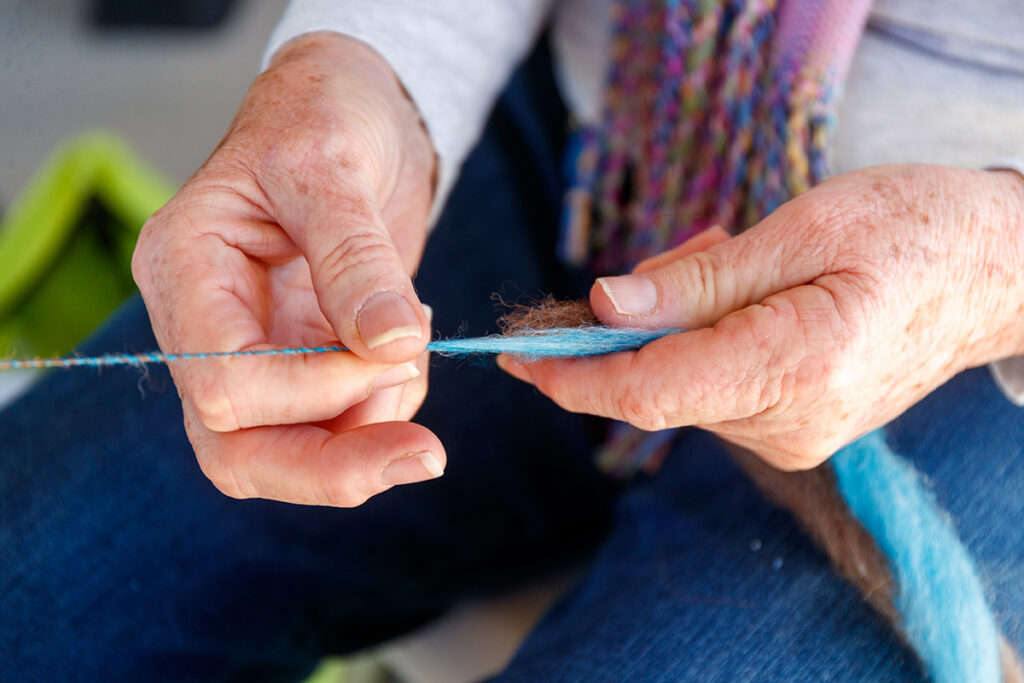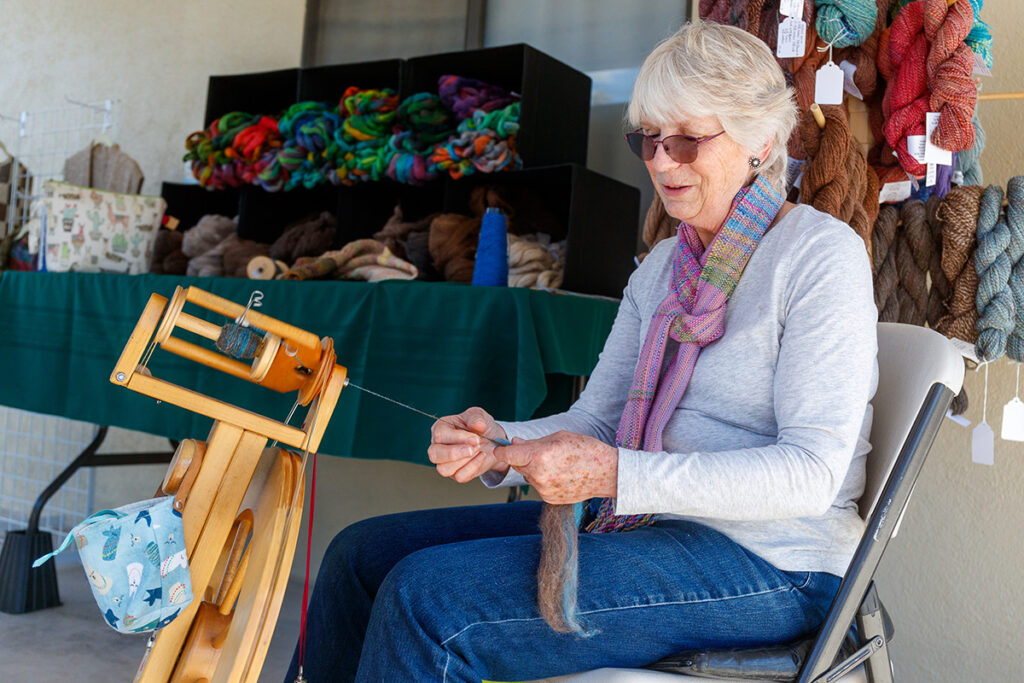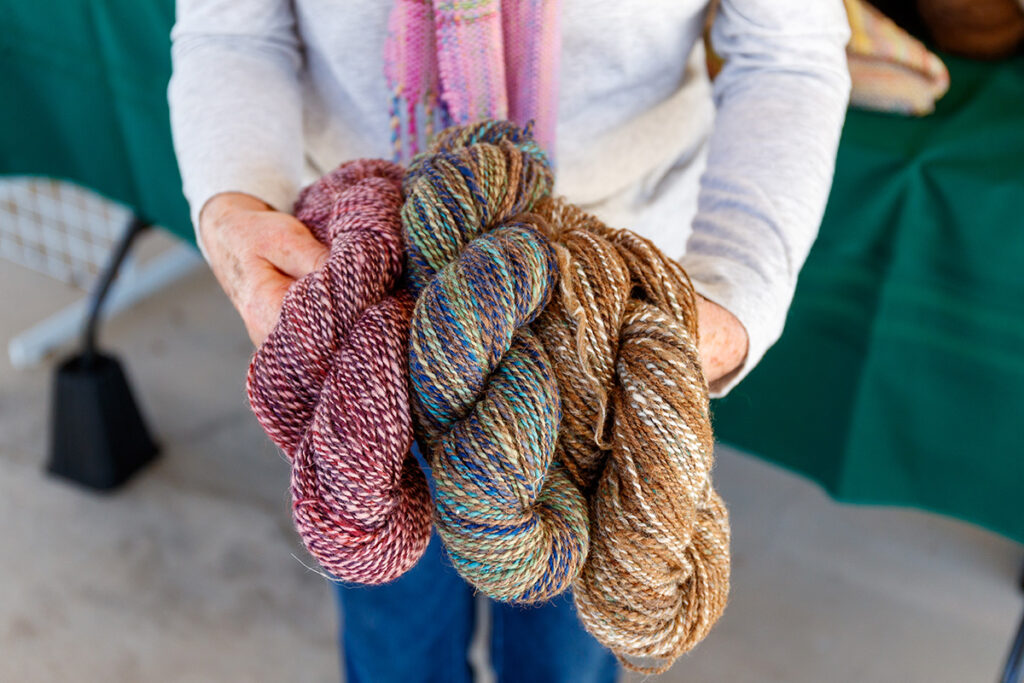Camp Verde artist Nancy Wilson began spinning and creating fiber art after she and her husband acquired their first llamas.
The Wilsons got their first llamas in 1987 to help carry their backpacking supplies after they attended a meeting held by the Southwest Llama Association, where they met friends and mingled with the llamas. At that point, Wilson said, “we went down the rabbit hole.”
Llamas typically weigh around 350 pounds and were bred for packing; Wilson said that they can carry a quarter of their body weight. Alpacas, by contrast, were bred for their fleece and weigh between 100 and 200 pounds.

The Wilsons moved from Phoenix to Camp Verde in 1989, where they now live with 13 llamas and one alpaca. After getting their first llama, Nancy Wilson realized that she needed to learn how to spin. She learned to shear her llamas and spin their fleece into yarn, which she uses for knitting and weaving.
Wilson explained that the best-quality fleece comes from an area known as the blanket between the front and rear legs, essentially the area where a blanket would be thrown over the animal. The second-best fleece comes from the neck and the top of the legs. Anything below the tops of the legs is the lowest grade and could potentially be used for stuffing.
After shearing, Wilson washes the fleece to remove debris and runs it through a hand carder, which looks like an oversized dog brush. This is used to align the fibers and produce a smoother yarn. If processing a large quantity of fiber, Wilson will send it off to a company that does processing on a larger scale.

The finished product of carding is called roving, which can then be spun into yarn. Wilson uses her yarn for knitting vests, shawls and scarves, and recently acquired a loom to experiment with weaving.
“I can’t imagine not doing fiber art, or not having llamas,” said Wilson, who finds spinning to be a form of relaxation. “It’s very rewarding to be able to have something afterwards that you’ve made out of your own animals’ fiber that you’ve grown and taken through the whole process.”

She said that the pieces she makes bring back stories, including stories of the animals from which the fibers originated. Wilson said that the very first thing she made was a vest made of commercial wool with a vertical strip of her first hand-spinning from her first llama, Tiberius.
“It brings back all kinds of memories,” Wilson said.
Wilson currently has 10 female llamas and three male llamas, which are easy to care for, requiring only one feeding a day. She has bred numerous llamas over the years and only recently had two accidental babies, which made her realize how much she missed having baby llamas around.
Within an hour or two of being born, Wilson noted, the baby llamas start doing sprints as they learn to coordinate their legs. They also pronk, or spring straight into the air from a standing position on all four feet.
“If they’re doing that during feeding I’ll just stop and watch, because it’s just such a happy movement,” Wilson said.

Wilson also teaches children about fiber art through the city of Sedona’s Artist in the Classroom program. She said that many of the people in the guild are older and that passing these skills down to young people is important work.
“We need to have young people learning the fiber arts so that it continues and doesn’t die out,” Wilson said. “There’s so much talk about STEM, which is wonderful, but in order to have those things you need to have creativity, and to have your creativity challenged. Doing things with your hands is so important.”
Wilson recently taught weaving to third-graders at West Sedona School.
“They learn to appreciate things that are handmade and the steps that are involved,” Wilson said. “They see all that goes into it, so they have an appreciation for the time and effort that’s involved.”
Wilson is a member of the Mountain Spinners and Weavers Guild in Prescott and the Verde Valley Weavers and Spinners Guild. She sells her fiber work at events they host and other fiber events.



